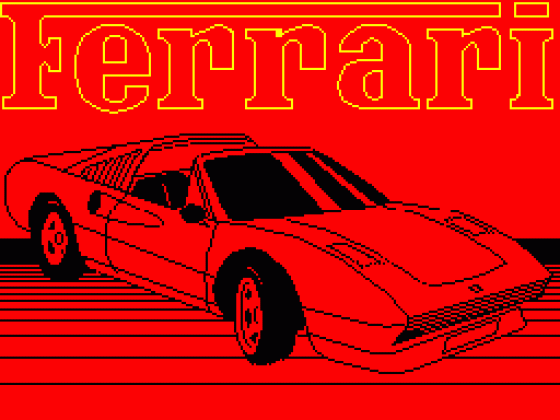
Crash
 1st June 1984
1st June 1984
Categories: Review: Software
Publisher: Melbourne House
Machine: Spectrum 48K
Published in Crash #5
Melbourne Draw
Melbourne Draw, as the name implies, is a graphics utility for the Spectrum. Its main use, apart from the easy production of User Defined Graphics direct from the keyboard, must be considered to be that of the production of loading screens for games. From examining the loading screens of some of Melbourne House's most popular game (Hobbit, Penetrator, Terror-Dactil), it is easy to see the effectiveness of the Draw program in producing attractive screens.
The program itself is written in Basic, with some machine code routines for greater speed, particularly in the useul Paint commands which can fill a pre-drawn shape with a given INK colour. Being rather short, the program loads very quickly and first offers a main menu, which includes the option to edit (if an already drawn SCREEN$ has been loaded in from tape) or draw a picture, or Save or Load any UDGs. On selecting the mode for editing, one is presented with a clear screen, apart from a single pixel cursor. Below the screen is a two-line information window, which displays several important parameters of the program's operation. On the right-hand side is the current INK, PAPER, BRIGHT and FLASH settings, which can be simple changed at will from the keyboard.
Movement of the cursor is by eight directional keys and can be used to set or reset pixels with ink colour, or, indeed, to skip over pixels to enable rapid movement over the screen without leaving a trace. To aid the latter, the co-ordinates of the moving cursor are displayed in the information window.

Once basic shapes have been drawn on the screen, the colour attributes of the picture may be edited, by a simple switch into the Attributes mode. As a consequence of the poor colour resolution of the Spectrum, in only allowing one INK colour per character square, the cursor grows to a full 8 x pixelsquare, and this can be used to 'wash' over coloured shapes to fill them in with a new colour.
During these drawing operations, the input of text on the screen is not catered for, but this is covered by a switch to the text mode. This mode is equally versatile, allowing characters to be produced in any of four directions: left to right, upside down, and sideways (from top to bottom and vice versa), with a large arrow cursor on screen to point to the current print location and the direction of travel.
To aid the drawing of fine details, there is a facility for screen magnification, by a factor of eight or 16. These zoom into your work of art at the pixel level to help produce the subtleties of shading and detail that companies like Ultimate achieve in their loading screens.

These are the major facilities provided by the program, but there are several other options which are very useful. For example, a 760 position grid can be generated on the screen and any of these character positions can be copied simply into the UDG area, and, for reference, the eight bytes of the UDG data are displayed in the information window as the graphic is stored. The screen can be scrolled, pixel by pixel, in any of eight directions and, handily, the information window can be removed, to enable drawing of the picture to be continued onto the bottom two lines of the screen.
Accompanying the program are three of the title screens from Melbourne House games, which can be loaded into the program and edited, re-coloured and magnified to show the fine detail. In fact, any named SCREEN$ can be loaded in (and later Saved again) and altered, and great fun can be had with this option, using commercial games software.
A 16-page booklet is also supplied, an essential adjunct to the program, because of the sheer complexity of the keyboard controls used - 70 all told, excluding the usual text keys, a bewildering number to remember without constant reference without constant reference to the hand well-written manual.
Overall then, a well thought out package, for the albeit rather limited area of Spectrum on-screen art, providing a few handy routines which are not readily available to the user who is drawing entirely from Basic. Unfortunately, it does seem rather highly priced for what is not a very involved piece of programming, and the market is still open for a superior piece of software, possibly which can be used in conjunction with a light-pen to provide a package really worth buying.
Other Reviews Of Melbourne Draw For The Spectrum 48K
Rembrandt & Co.
A review by (Crash)
Melbourne Draw (Melbourne House)
A review by D.N. (Home Computing Weekly)
Melbourne Draw (Melbourne House)
A review by (Sinclair User)




